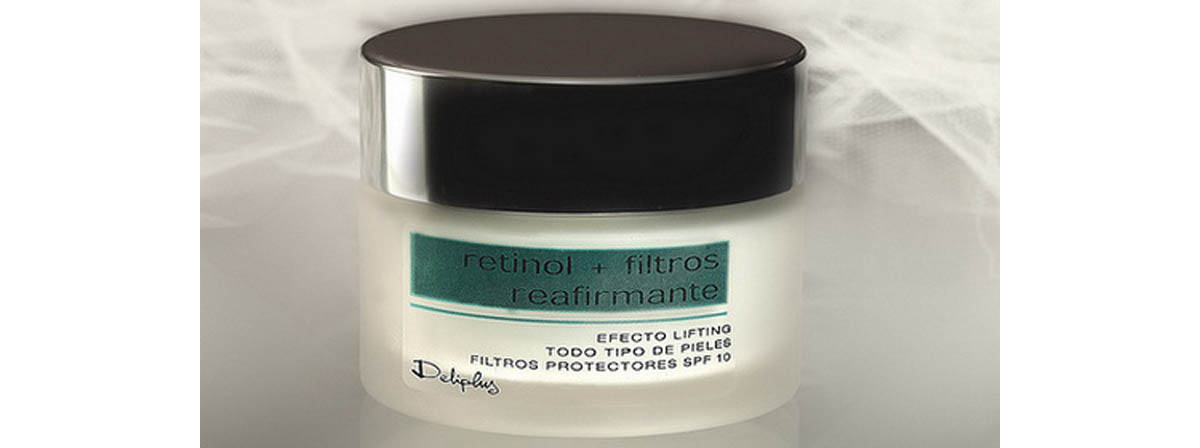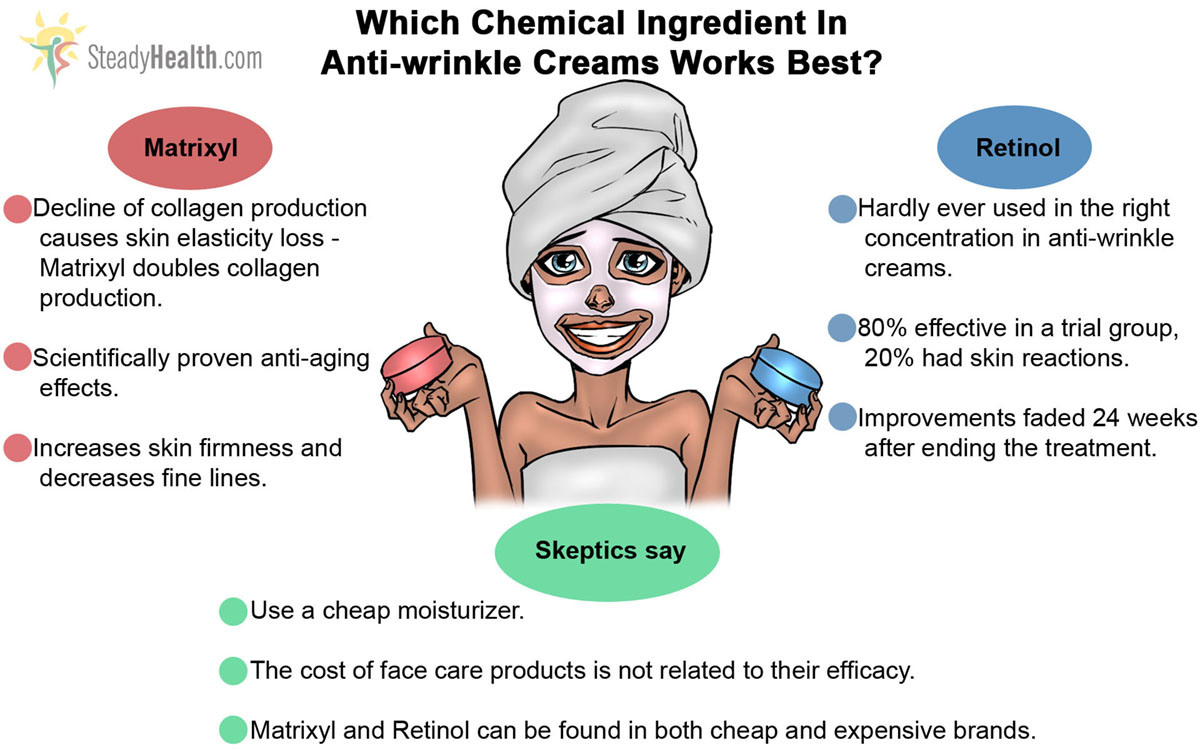Visible signs of aging don’t make anyone happy. The search for the “fountain of youth” is a thousand years old exploit that delivered innumerable remedies for preventing and slowing down the inevitable age-related changes we all live to see... if we're fortunate enough.
The use of facial creams is one of such approaches that have been explored and patronized by the public from early human history. Face creams were used by women even in Ancient Rome. Archaeologists have unearthed many samples of facial creams from that era that contain some animal fat, tin, and starch, indicating the ancients knew how to keep their skin soft and supple.
What are wrinkles?
Folds, ridges or creases in the skin are normally associated with aging. Their formation is sped up by too much UV exposure, smoking, poor hydration and habitual facial expressions. Damage due to too much sunlight exposure, called photo-damage, hastens the aging process and also results in hyper-pigmentation and roughness. At the cellular level, damage can be seen through deterioration of collagen network, evident in skin laxity, and the decrease in the amount of elastic tissue.
Environmental factors — that is, anything detrimental to your skin — can certainly speed up the aging process. However, everyone develops wrinkles over time. This process starts with barely-noticeable fine lines and culiminates in deep wrinkles. At the same time, the skin becomes thinner and less elastic.
Many people turn to face creams in an effort to slow down the development of wrinkles. There is no question that creams hydrate the skin by locking moisture in, which is great if you have dry skin. Do they also have the capacity to fight wrinkles, though?
New treatments galore
Creams with novel, sometimes quite exotic components are constantly developed, and consumers rush in to buy them and discover what these creams can do for them. Dermatologists are continuously challenged by queries of those seeking professional help on the use of creams and lotions geared to fight signs of aging and sun exposure damage. Many brands claim to meet this purpose. However, the studies that support these claims are usually performed on small scales and often lack proper scientific planning and organization.
To assess the cream's efficiency, the following questions need to be answered:
Do any face creams really remove wrinkles?
If yes, what are the major active chemical ingredients that are important for this effect?
Anti-wrinkle creams serve their purpose but only with the right amount of the right ingredients. Not many commercial products, however, have the right active compounds in the right quantities. A number of substances were shown to be effective at least to some degree.
One of the most recent scientific studies has shown that a chemical known as matrixyl which is integrated in some anti-wrinkle creams can double the collagen production in the skin. This is an important finding: the decline of collagen production is one of the major factors behind the loss of skin elasticity.
The Chief Scientist at Olay, Dr Sian Morris also confirmed the consistency of the effects of matrixyl. The compound decreases the presence of fine lines and increases skin firmness giving the individual a more youthful look.
Some Ingredients Of Face Creams Are Proven To Work, But Not Everyone Is Convinced That They Are Effective
While the findings about matrixyl are relatively new, another active ingredient, retinol, received much more attention of scientists and dermatologists. Retinol is a popular ingredient in many creams. One study assessing its efficacy involved 36 individuals aged 80 or above. Five participants did not finish the study due to skin irritation but in those who did the condition of skin significantly improved.

Skin irritation is the major reason for restricting the availability of retinol products by prescriptions. There is not much evidence, however, that prescribed products are any better than those freely available.
One recent study compared the effect of non-prescription 1.1% tri-retinol and prescription retinoids like 0.025% tretinoin. The study lasted for 12 weeks, and no significant difference in the efficacy of two products was observed. At the end of the study, more than 93% of the subjects showed skin improvements and were satisfied with the results.
Topical agents enriched with AHA (alpha hydroxyl acids) were assessed for treatment of photo-damaged skin in a double-blind randomized clinical trial. Participants (74 women) were using creams containing 8% lactic and glycolic acid for 22 weeks. Half of the participants were given a placebo without active ingredients. Findings revealed that AHA decreased photo-damage of skin by 70% while in the placebo group only 41% improvement was seen. Unfortunately, many participants experienced skin irritation over the course of this study.
Skeptics are not convinced by face creams
While some studies conclude that at least some facial creams effectively fight wrinkles, many others come to a different conclusion. Professor Chris Griffiths from the University of Manchester, United Kingdom, warned customers about wasting their money on the expensive facial creams.
Dr. Patrick Bowler, the Harley Street skin specialist, says that the “miracle ingredients” such as AHA and retinol cannot eliminate the wrinkles since they are hardly ever used in the right concentration.
Commercialization of beauty treatments and problem of choice for the customers
The use of skin care and cosmetic products often depends on individual preferences. Marketing and advertising plays a huge role in promoting certain cosmetic brands. Many people are more influenced by peers’ opinions rather than scientific evidence. Their choice may also be affected by financial capability.
The good thing is that the creams with “magic ingredients” are often available at cheaper prices. It seems that the cost of face care products is often not related to their efficacy and composition. For instance, matrixyl, one of the very few ingredients with scientifically proven anti-aging effects, can be found in both cheap and expensive cosmetic brands. It saves money to pay attention to the list of ingredients!
- Kafi R et al. (2007) Improvement of naturally aged skin with vitamin A (retinol). Arch Dermatol 143, 606-12
- Leon H. Kircik MD (September 2012). Histologic Improvement in Photodamage After 12 Months of Treatment With Tretinoin Emollient Cream (0.02 %). Journal of Drugs in Dermatology. Volume 11, Issue 9, pages 1036-1040
- Ho ET, Trookman NS et al. (January 2012) A randomized, double-blind, controlled comparative trial of the anti-aging properties of non-prescription tri-retinol 1.1% vs. prescription tretinoin 0.025%. Journal of Drugs in Dermatology, Volume 11, Issue 1, pages 64-69.
- Mindmap by steadyhealth.com
- Photo courtesy of mirwav by Flickr : www.flickr.com/photos/mirwav/4295602939/



Your thoughts on this